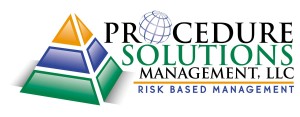
Our Manager of Project Services, Jennifer Smith, explains the steps you can take if you’re struggling to begin the procedure writing process.
Have you been tasked with writing procedures that detail your daily responsibilities? Maybe these tasks are performed infrequently on a weekly, monthly, or yearly basis.
We often don’t realize all the tasks we do that make up our daily responsibilities. You may think that your small jobs don’t need documentation, but these could be BIG responsibilities if you are the only person in the organization who performs them.
It can certainly be daunting to write it all down, but if you think of it in just a few basic steps, you will be on your way to documenting the “how-to” of your job responsibilities.
1. Create a High-Level List of Your Job Responsibilities
To get started, write a list of all the tasks you do. Then group all similar activities, especially if they roll up to one overall program or process. This process builds out the structure of your procedure.
2. Develop the Content
Begin by taking one procedure topic at a time to help not overwhelm yourself. Write down the purpose and scope of each activity you’re responsible for. When you’re able to answer what the task is, when the procedure applies, and why it needs to be performed in a specific manner, you’ve laid out the foundation of your procedure.
Next, find all of your developmental information. This information aids in developing your procedure and can be anything you have written down, such as checklists, handwritten notes, or handed down information.
After this, you’re ready to start breaking down your paragraphs of information into single actionable steps. Ensure that the steps are sequenced in a logical order focusing on subsection, step, and child step structure. Each step should identify who, what, and how.
3. Format
If you don’t have a template available, create a standardized format that makes the procedure and the procedure development consistent and easy to follow. You’ll want to move all the written step-by-step instructions into the applicable sections.
4. Validate
Now use your procedure! This may seem silly, but the best way to review your procedure for necessary edits is to use your procedure. This practice is called validation – the process of exercising your procedure. Validation ensures that your procedure is usable, the language and level of information are appropriate for the intended individuals, and that it functions as intended. Validation significantly improves the performance and sustainability of your procedures.
5. Create a Maintenance and Update Schedule
Now that you’ve developed your procedure, don’t let it just sit on the shelf! Come up with a schedule that allows you to routinely review the procedure to ensure it’s always up-to-date.
Just remember — the most challenging part is getting started!
And if you discover that you like writing procedures and want to learn more, you can join our upcoming Online Technical Procedure Writer Certification Course! Visit our training page to learn more and register for the course.
By Jennifer Smith, Manager of Project Services
If you like our content, subscribe to our blog using the link to the right of this post. Visit our services page for more information on our staffing, training, and consulting services.




